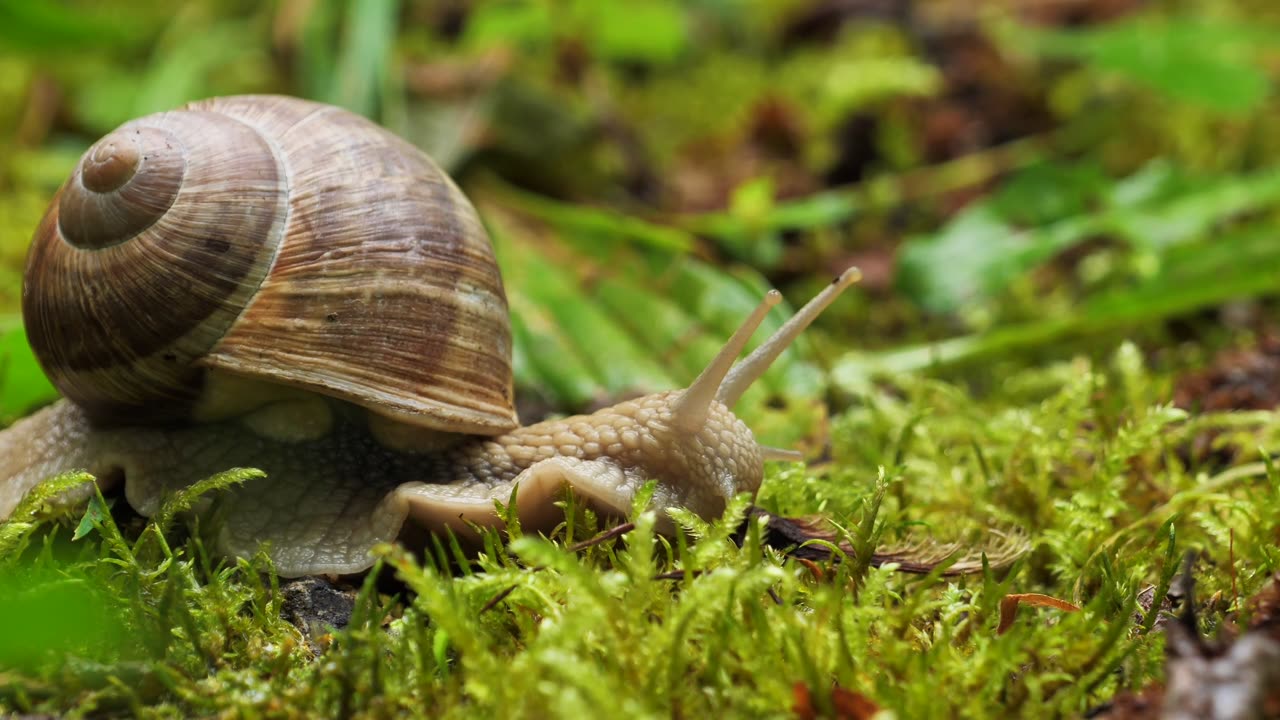Premium Only Content

Snail Mollusk Creeping
Enter the captivating realm of snails, where the enchanting world of mollusks unfolds in a mesmerizing display of slow and graceful movement. Snails, belonging to the class Gastropods, are intriguing creatures that have adapted to a wide array of environments, from lush rainforests to arid deserts. This description delves into the art of snail locomotion, exploring the unique mechanics behind their creeping journey.
At first glance, a snail's locomotion might seem unassuming, yet its elegance lies in its unhurried pace and deliberate method. The process involves a combination of muscular contractions, mucus secretion, and rhythmic undulations. A muscular foot, characteristic of mollusks, becomes the focal point of this locomotion. By rhythmically contracting and relaxing their foot muscles, snails create a rippling motion that propels them forward.
One of the most captivating aspects of snail movement is the mucus trail they leave behind. This silvery secretion serves multiple purposes: it reduces friction against surfaces, aids in gripping various terrains, and even provides a form of moisture retention, essential for snails in drier habitats. As the snail advances, its mucus-enveloped foot glides along, leaving behind a glistening path that tells the tale of its journey.
The diverse habitats snails inhabit have led to fascinating adaptations in their creeping techniques. Forest-dwelling snails, for instance, maneuver deftly over uneven terrain, utilizing their flexible foot to navigate obstacles with surprising agility. Desert-dwelling species, on the other hand, have developed an artful way of sealing themselves within their shells during the day to conserve moisture, emerging only during cooler hours to venture forth in search of nourishment.
Observing the snail's methodical crawl, one cannot help but marvel at its resilience and determination. Despite its leisurely pace, the snail is not without its predators and challenges. Its shell, often ornately adorned, serves as both a protective armor and a symbol of its unique identity. The world of snails is rich with biodiversity, showcasing an astonishing array of colors, patterns, and sizes that have evolved to blend with their surroundings.
In conclusion, the snail's creeping journey unveils a world of intricate adaptation and deliberate movement. Through its rhythmic undulations, mucus-aided glide, and diverse
-
 LIVE
LIVE
Dear America
10 hours agoElon Accused Of Shorting Child Support?! + Trump Hosts Kid Rock & AG Bondi Sends STRONG Warning!
3,812 watching -
 LIVE
LIVE
2 MIKES LIVE
1 hour agoTHE MIKE SCHWARTZ SHOW with DR. MICHAEL J SCHWARTZ 04-01-2025
111 watching -
 1:22:44
1:22:44
Game On!
12 hours ago $5.49 earnedGrassGuy is EXCITED for Tom Brady's RETURN as Raiders QB1! April Fools'!
25.5K2 -
 34:50
34:50
The Rad Factory
23 hours ago $6.00 earnedCan We Fix Everything Wrong With My Fake F1 Car??
32.2K11 -
 19:53
19:53
CatfishedOnline
13 hours agoMan Dates Jennifer Aniston Or Online Romance Scam?
30K13 -
 11:40
11:40
Shea Whitney
16 hours ago $4.48 earned20 Best *DESIGNER INSPIRED* Items on Amazon!
34K4 -
 11:05
11:05
Hannah Barron
23 hours agoFirst STEELHEAD Trip!
35.6K13 -
 1:00:13
1:00:13
Trumpet Daily
22 hours ago $7.42 earnedThe World Realigns Against America - Trumpet Daily | Mar. 31, 2025
39.5K26 -
 11:08
11:08
This Southern Girl Can
14 hours agoDIY Spring Wreath
39.4K3 -
 3:04:40
3:04:40
Danny Polishchuk
20 hours agoLiberation Day Looms + Guest Richard Syrett Talks JFK Files | Low Value Mail Live Call In Show
82.4K28